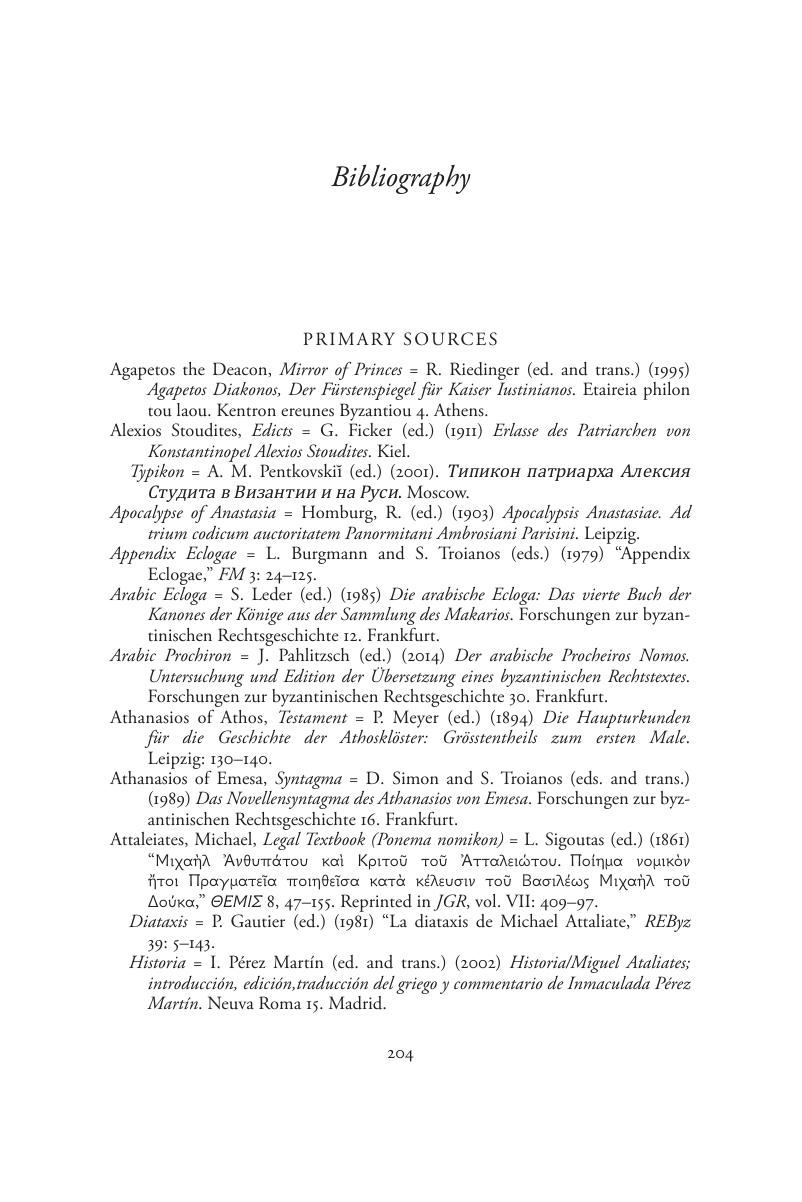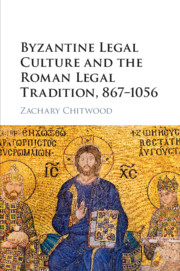Book contents
- Byzantine Legal Culture and the Roman Legal Tradition, 867–1056
- Byzantine Legal Culture and the Roman Legal Tradition, 867–1056
- Copyright page
- Dedication
- Contents
- Acknowledgments
- Note on Naming, Translation and Transliteration
- Abbreviations
- Introduction: Reciting Homer in the Courtroom – Byzantine Legal Culture
- Chapter 1 The “Cleansing of the Ancient Laws” under Basil I and Leo VI
- Chapter 2 Gift-Giving and Patronage in Middle Byzantine Courts
- Chapter 3 Paradigms of Justice and Jurisprudence
- Chapter 4 The Function of “Private” Law Collections in the Byzantine Empire and Neighboring Cultures
- Chapter 5 Law and Heresy in the Edicts of the Patriarch Alexios Stoudites
- Chapter 6 Legal Education and the Law School of Constantinople
- Conclusions
- Appendix Translation of the Novella constitutio
- Bibliography
- Index
- References
Bibliography
Published online by Cambridge University Press: 24 March 2017
- Byzantine Legal Culture and the Roman Legal Tradition, 867–1056
- Byzantine Legal Culture and the Roman Legal Tradition, 867–1056
- Copyright page
- Dedication
- Contents
- Acknowledgments
- Note on Naming, Translation and Transliteration
- Abbreviations
- Introduction: Reciting Homer in the Courtroom – Byzantine Legal Culture
- Chapter 1 The “Cleansing of the Ancient Laws” under Basil I and Leo VI
- Chapter 2 Gift-Giving and Patronage in Middle Byzantine Courts
- Chapter 3 Paradigms of Justice and Jurisprudence
- Chapter 4 The Function of “Private” Law Collections in the Byzantine Empire and Neighboring Cultures
- Chapter 5 Law and Heresy in the Edicts of the Patriarch Alexios Stoudites
- Chapter 6 Legal Education and the Law School of Constantinople
- Conclusions
- Appendix Translation of the Novella constitutio
- Bibliography
- Index
- References
Summary

- Type
- Chapter
- Information
- Byzantine Legal Culture and the Roman Legal Tradition, 867–1056 , pp. 204 - 230Publisher: Cambridge University PressPrint publication year: 2017



